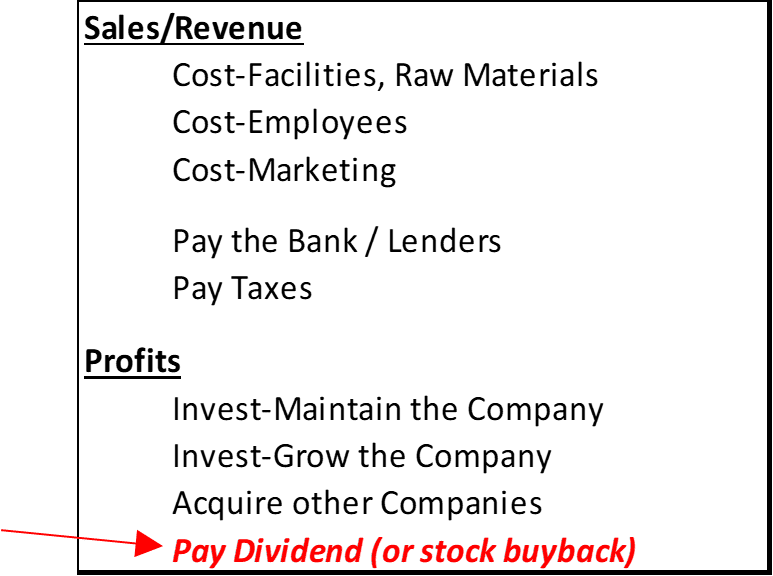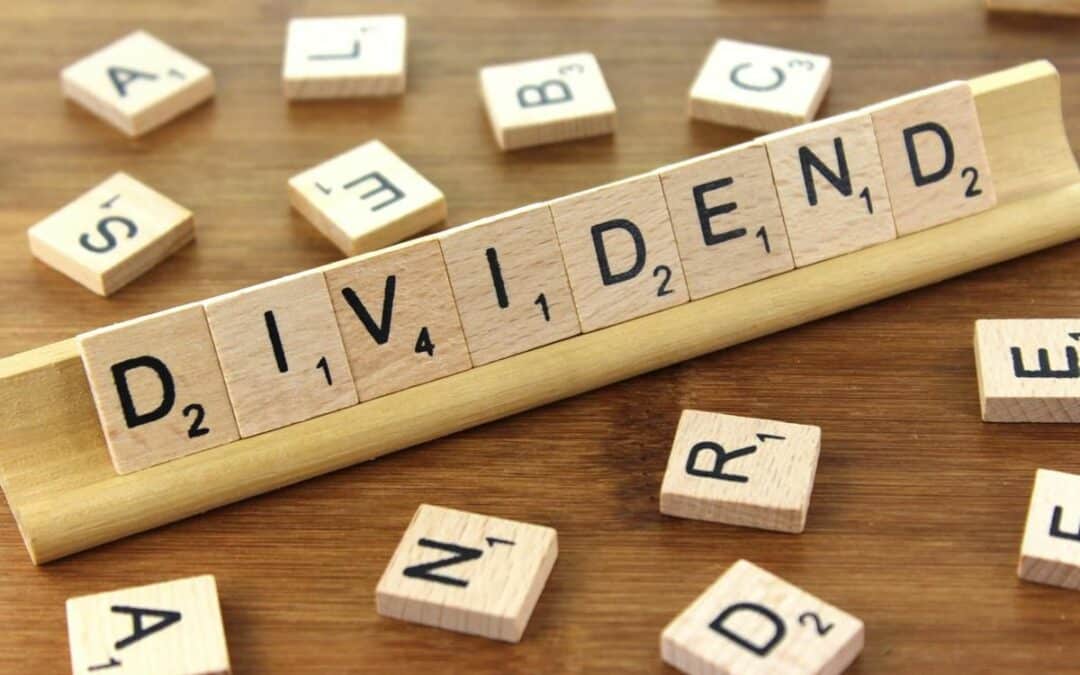On the right, you can see the definition of dividend, provided by Google.
We’re happy that the definition mentions profits because, over time, without profits, dividends cannot exist.
But we also understand that this definition might not be that helpful. And, we want to shed a little more light on why dividends are NOT particularly important to our investment process.
First, let’s look at where a dividend comes from (profits), but let’s try to make a totem pole, if you will, of how a company stacks up all kinds of “money things.”
When you go to a store and spend your money, you have created sales for that company. To deliver whatever you just purchased takes all kinds of effort, which has many costs associated with it. For
After all those items are paid, IF there is money left over, that’s a profit. Of course, every for-profit company hopes to earn a profit, but even if it does, the company can’t likely keep it all.
There are many decisions to make:
- What things need to be fixed or improved? (For example, maybe in our prior example a clothing store wants to refresh its look to be more modern)
- Should the company expand? Maybe another store? Another city?
- Might it be a good idea to buy another company to grow?
- Or, instead, should the company give the money to its owners (shareholders)?
The last item on there – give the money to the owners – is where a dividend comes from.
Hopefully, that helps you to understand the technical definition of a dividend at the top.
But what we really want to point out are two important points:
- If you’re looking for a dividend, you are basically last on the list. Not all companies will treat its dividend-hopeful owners as lowest on the totem pole because many are staunchly committed to paying dividends. However, companies need to spend money on all kinds of things first, and they also CAN, and OFTEN choose to do all kinds of other things with their money instead. For example, in 2019, General Motors (GM) sold $137 billion worth of cars but only was able to pay just over $2 billion in dividends. Wells Fargo had to reduce its dividend in 2020 due to poor business performance. General Electric (GE) did the same (cut its dividend) first in the 2008 financial crisis, then again in 2017. It wasn’t done – GE again cut its dividend to a penny per share in 2018.
- Paying a dividend uses up money that the company could use to reinvest in itself – to grow or get better. In other words, if a company chooses to pay out some of its profits, it’s also choosing not to pursue other investment opportunities with that money. That means a key question follows: does the company lack good investment opportunities? If that were the case, why would you want to invest your money in that company? While the following quote isn’t
- always true, we like the thought process that Brian Feroldi is getting at with his tweet.
We’re not saying that dividends are bad. In fact, many companies can (and do) pay dividends appropriately. What we ARE saying is a dividend is but one tiny piece of all the money coming in and out of a company, and making an investment decision based on that often misses the bigger picture.
Our experience shows that companies that make poor financial decisions ultimately become poor investments, and we try hard to avoid that. If we don’t like what we see at any part of that company-spending totem pole, we will choose to invest somewhere else – dividend or not.



